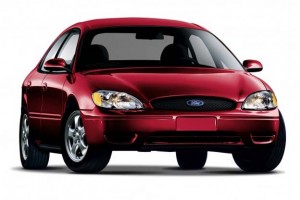
The investigation appears to center around the cruise control system on the 2005 and 2006 Ford Taurus.
In the latest investigation related to unintended acceleration problems, federal regulators have launched a probe into reports of sticky accelerators that could involve as many as 2 million midsize Ford sedans, including the maker’s Taurus model.
The National Highway Traffic Safety Administration initially announced it was opening a probe of the 2005 to 2006 Taurus. But it has since expanded the scope of the probe to cover the Taurus line back to 2001 while also including the near-twin Mercury Sable model.
Though there have been no reports of accidents or injuries, the investigation was triggered by 14 complaints filed by Taurus owners, including one who ran a red light unable to bring the car to a halt. As many as 30 complaints have been cited to justify the expansion of the investigation. The probe by the is in a preliminary stage and it has not yet been determined whether a recall will be required.
“Wow. The scariest thing I have ever experienced,” one driver wrote to the NHTSA, claiming their vehicle blasted through an intersection at 70 mph before being brought under control. “If there was heavy traffic someone would have been killed, no doubt in my mind.”
Other owners report their vehicles accelerated without the application of the throttle.
The probe initially focused only on the Ford Taurus, but as that sedan is virtually identical to the Mercury Sable it came as no surprise that the investigation has been expanded.
Preliminary indications point to a problem with the cruise control system used in the midsize sedans. According to NHTSA, a cable may become disconnected holding the throttle open.
The issue of unintended acceleration has become a frequent source of complaints to federal regulators, though by far the most serious case eventually came to cover millions of Toyota vehicles. The maker initially announced a recall in October 2009 when it realized loose carpets could jam the throttle on some vehicles. It added a second recall in January 2010 to cover millions more products equipped with potentially sticky throttles.
Though Toyota was slapped with record fines for delaying the second recall it was eventually cleared by a pair of investigations – including one conducted by NASA – looking into whether the maker’s electronic engine control systems were plagued by mysterious gremlins.
But Ford and Toyota are not alone. The number of vehicles covered by unintended acceleration complaints has been steadily rising since the late 1980s, when the Audi 5000 was at the center of an early NHTSA investigation. The maker was eventually cleared, as with Toyota regulators ascribing most of the complaints to driver error.
Whether that will come into play with the new Ford Taurus investigation remains to be seen.
